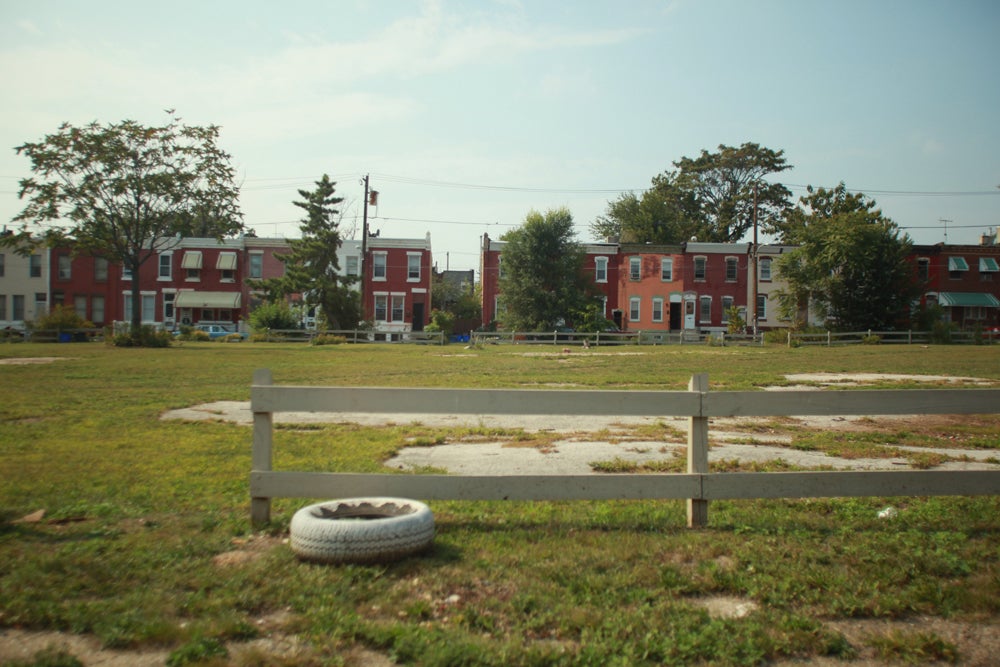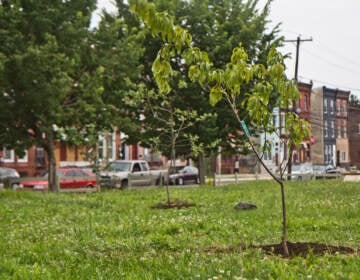Philly’s LandCare Program cleans, greens and reduces crime

This week Philadelphia has served as both host and case study for the 2013 Reclaiming Vacant Properties conference. With 40,000 vacant lots, Philadelphia is no stranger to the issues linked to urban land vacancy. Fortunately, the city is also no stranger to strategies that can not only improve individual lots, but reduce crime and improve quality of life in the surrounding communities and city as a whole.
Today, 8,500 public and privately owned vacant parcels are cleaned, greened and maintained through the Philadelphia Land Care Program, a collaborative effort spearheaded by the City of Philadelphia and the Pennsylvania Horticultural Society (PHS). Since the program began in 1999, it has demonstrated that the cleaning and greening approach has an impact beyond beautifying the neighborhood. Cleaning and greening has also been shown to reduce gun assault, vandalism, stress and inactivity.
Each year the City of Philadelphia spends about $2.5 million on the LandCare Program. With that money, the city contracts PHS to “clean and green” strategically selected vacant parcels in distressed communities. At each parcel, PHS removes trash, brings in new topsoil, adds a posted rail fence and plants trees along the perimeter. PHS then contracts seasonal maintenance crews.
Under this system, “cleaning and greening” a vacant parcel takes about six weeks. LandCare gets to around 400 to 500 vacant parcels each season.
The impact of such efforts has been looked at closely by researchers at the University of Pennsylvania. At the conference, the university’s Dr. Charles Branas, spoke about a Penn study that compared neighborhoods around the 4,436 parcels the Philadelphia LandCare Program cleaned and greened between 1998 and 2008 with neighborhoods around 13,308 lots that were eligible for greening but had not yet been greened.
The research found that gun assault decreased, but disorder calls went up – calls for things like public urination and public intoxication.
“That speaks to the fact that if you clean and green spaces in an area, we think people begin to take more interest in the lots around them, more interest in self-policing [the lots],” Branas said.
The research also found that vandalism, stress and inactivity all decreased in the neighborhoods around cleaned and greened parcels as well.
“It takes a commitment of resources – of money, of time, of energy – but the benefits are tremendous,” Deborah McColloch, director of Philadelphia’s Office of Housing and Community Development.
For programs like LandCare to be successful, McColloch said the programs need to include strategic investments in economically depressed areas, longterm partnerships, paid maintenance employees (not just volunteer help) and committed leadership and decision makers.
“It takes time to develop these wonderful collaborations because we have so many people sitting at the table,” said Alia Walker, a community activist, leader and urban farmer at Earth’s Keepers, Inc. in West Philadelphia.
Walker stressed the importance of including the community from the get go. She warned that often communities are wary of outside help because it is unknown. To remedy that, she said the programs have to be transparent and leaders must “stay at the table.”
“The community wants concrete rewards, not just symbolic rewards,” she said.
Funding for programs like LandCare and related research cannot just go to outside employees or the institutions.
“It is so very important to value the community and not just assume that because they’re a vulnerable community or don’t have much, they don’t have value,” Walker said.
Going forward Penn is conducting research that will compare the neighborhood impacts of lots that have been both cleaned and greened versus those that have simply been cleaned. The goal is to determine just how much of an influence greening has. That research is being funded by the National Institutes of Health (NIH).
“Regardless of what it finds, the NIH has agreed to green 100 vacant lots in the City of Philadelphia,” Branas said.
A version of this piece was published on NextCity.org on 9/11/13 as part of their coverage of the 2013 Reclaiming Vacant Properties conference in Philadelphia this week.
WHYY is your source for fact-based, in-depth journalism and information. As a nonprofit organization, we rely on financial support from readers like you. Please give today.





